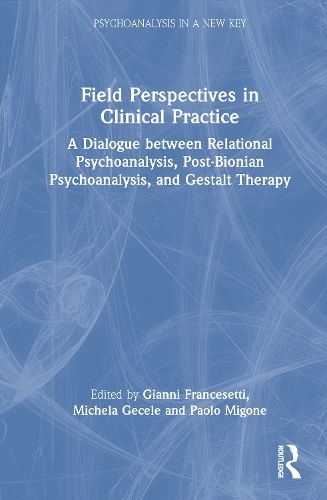Readings Newsletter
Become a Readings Member to make your shopping experience even easier.
Sign in or sign up for free!
You’re not far away from qualifying for FREE standard shipping within Australia
You’ve qualified for FREE standard shipping within Australia
The cart is loading…






This book is the outcome of a fruitful dialogue between relational psychoanalysis, neo-Bionian psychoanalysis, and Gestalt therapy on a contemporary growing edge of clinical practice: field theory.
What is happening in contemporary clinical practice that seems to be pushing theories towards a field perspective? Clinical issues are complex phenomena-they cannot be separated from social and cultural changes. Suffering, clients, and therapists change over time, and with them so do the needs and theoretical approaches of clinical professionals, so as to be able to update and adjust care practices.
This book is an independent, yet common study, which through the field concept explores what complexity theories and dynamic systems theories have described as "emerging phenomena," or what phenomenological philosophy categorized as phenomenal field, pathic aesthetics, and atmospherology, or, more generally, our understanding of the relationship between clinical practice and critical thinking and of the centrality of the individual, as developed by postmodern thinkers.
With multiple professional perspectives and essential clinical material, this is key reading for psychoanalysts and psychotherapists.
$9.00 standard shipping within Australia
FREE standard shipping within Australia for orders over $100.00
Express & International shipping calculated at checkout
This book is the outcome of a fruitful dialogue between relational psychoanalysis, neo-Bionian psychoanalysis, and Gestalt therapy on a contemporary growing edge of clinical practice: field theory.
What is happening in contemporary clinical practice that seems to be pushing theories towards a field perspective? Clinical issues are complex phenomena-they cannot be separated from social and cultural changes. Suffering, clients, and therapists change over time, and with them so do the needs and theoretical approaches of clinical professionals, so as to be able to update and adjust care practices.
This book is an independent, yet common study, which through the field concept explores what complexity theories and dynamic systems theories have described as "emerging phenomena," or what phenomenological philosophy categorized as phenomenal field, pathic aesthetics, and atmospherology, or, more generally, our understanding of the relationship between clinical practice and critical thinking and of the centrality of the individual, as developed by postmodern thinkers.
With multiple professional perspectives and essential clinical material, this is key reading for psychoanalysts and psychotherapists.